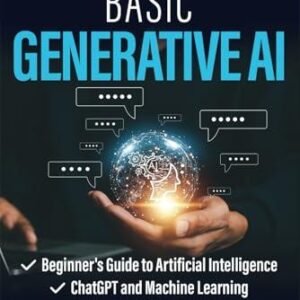Introduction:
In an age defined by rapid technological advancement, artificial intelligence (AI) is poised to revolutionize not just industries but also the very fabric of education — particularly in underdeveloped regions where traditional teaching methods often fall short. The persistent educational inequalities faced by students in these areas have long been a challenge, exacerbated by factors such as limited resources, insufficient trained educators, and socio-economic barriers. However, the promising capabilities of AI present a unique opportunity to bridge these gaps, fostering a more equitable learning landscape. In this article, we will explore how innovative AI-driven tools and solutions are being harnessed to enhance educational access, tailor learning experiences, and ultimately empower students in some of the world’s most underserved communities. Join us as we delve into the transformative potential of AI in education and uncover the paths to a brighter, more inclusive future for learners everywhere.
Table of Contents
- Transforming Learning Environments through AI-Driven Tools
- Personalized Education: Tailoring Learning Experiences for Every Student
- Training Educators: Equipping Teachers with AI Resources and Techniques
- Building Sustainable Infrastructure: Ensuring Access to Technology in Rural Areas
- To Conclude
Transforming Learning Environments through AI-Driven Tools
In an evolving educational landscape, AI-driven tools are reshaping the way learning environments function, particularly in underdeveloped areas. By integrating technologies such as machine learning and personalized learning algorithms, these tools can tailor educational content to meet the specific needs of diverse learners. This adaptive approach offers opportunities for students to engage with materials at their own pace, enabling them to overcome individual barriers and enhance their understanding of complex subjects. Furthermore, AI can assist educators by providing insights into student performance, guiding them to optimize their teaching strategies based on data-driven decisions.
Key advantages of implementing AI in these settings include:
- Personalization: Customized learning experiences that cater to varied learning styles.
- Accessibility: Tools that provide resources and support to students with disabilities.
- Scalability: AI systems can be deployed across multiple locations, making quality education more reachable.
| AI Tool | Benefits | Application |
|---|---|---|
| Smart Tutoring Systems | Immediate feedback and support | Math tutoring |
| Language Learning Apps | Interactive and engaging lessons | Foreign language acquisition |
| Data Analytics Platforms | Performance tracking and insights | Teacher assessments |
Personalized Education: Tailoring Learning Experiences for Every Student
As educational disparities persist globally, personalized education emerges as a critical solution to accommodate diverse learning styles, especially in underdeveloped regions. By harnessing the capabilities of artificial intelligence, educational tools can be designed to adapt to individual student needs, offering customized resources that align with their learning pace and preference. This technology helps to identify gaps in knowledge and competencies, enabling teachers to tailor their instructional methods effectively.
Implementing AI-driven platforms can provide a myriad of benefits, including:
- Real-time Feedback: Students receive immediate insights into their performance, allowing for timely interventions.
- Resource Customization: Learning materials can be adjusted based on each student’s strengths and weaknesses.
- Scalable Learning: AI can manage a large number of students while providing each with a unique learning experience.
The use of these intelligent systems would ensure that educational content reaches every corner, effectively bridging the gaps that exist in underserved communities. For instance, a recent analysis shows that students using personalized learning platforms improved their test scores by up to 30%. The table below illustrates the impact of personalized learning in various educational metrics, highlighting the potential of AI in transforming traditional educational landscapes.
| Metric | Standard Education | Personalized Learning |
|---|---|---|
| Test Score Improvement | 10% | 30% |
| Student Engagement | 50% | 80% |
| Dropout Rate | 15% | 5% |
Training Educators: Equipping Teachers with AI Resources and Techniques
In the quest to bridge educational divides in underdeveloped areas, training educators to effectively use AI tools is imperative. By empowering teachers with the right resources, we create a dynamic learning environment that can adapt to the diverse needs of students. Essential strategies include:
- Providing workshops on AI-based learning platforms
- Introducing AI-assisted administrative tools to streamline classroom management
- Encouraging collaborative projects that utilize AI for real-world problem solving
- Offering continuous professional development focused on integrating AI into existing curricula
Moreover, the integration of AI in education can be strengthened through the development of community partnerships. Local tech firms, educational institutions, and NGOs can collaborate to facilitate comprehensive training sessions. Creating a framework for ongoing technical support ensures that teachers can confidently use new technologies to their advantage. Below is a simple plan outlining the steps for these partnerships:
| Step | Description | Expected Outcome |
|---|---|---|
| 1 | Identify local tech partners | Access to resources and expertise |
| 2 | Organize joint training sessions | Informed educators ready to implement AI |
| 3 | Launch pilot programs in schools | Real-world feedback for improvement |
| 4 | Evaluate and iterate programs | Enhanced teaching strategies and student engagement |
Building Sustainable Infrastructure: Ensuring Access to Technology in Rural Areas
Sustainable infrastructure is vital for bridging the technology divide between urban and rural areas. By developing robust digital networks and reliable power sources, we can ensure that educational resources are accessible to every student, regardless of their geographical location. Essential components to focus on include:
- Reliable Internet Access: Expanding broadband connectivity through partnerships with local governments and private companies can help provide uninterrupted access to online educational platforms.
- Renewable Energy Solutions: Implementing solar or wind power systems can make technology accessible even in areas where traditional electricity grids are lacking.
- Community Training Programs: Organizing workshops to educate community members on utilizing technology effectively can enhance digital literacy and empower local educators.
Additionally, creating focused initiatives that involve local stakeholders can drive sustainable practices within rural communities. Establishing technology hubs where students can access computers and internet services is a critical step. Below is a simple representation of potential community-driven initiatives:
| Initiative | Description | Expected Outcome |
|---|---|---|
| Mobile Learning Units | Deploying buses equipped with laptops and internet service to remote locations. | Increased access to technology for students in underserved regions. |
| Community Wi-Fi Zones | Setting up free Wi-Fi hotspots in public areas. | Encouragement of group study sessions and access to online resources. |
| Teacher Training Workshops | Regular sessions to enhance teaching methods using technology. | Improved quality of education and engagement in classrooms. |
To Conclude
As we reflect on the transformative potential of AI in addressing educational disparities in underdeveloped areas, it’s clear that technology alone cannot bridge these gaps. Instead, it requires a concerted effort from governments, NGOs, educators, and communities to create a sustainable impact. By harnessing AI tools effectively, we can tailor educational content to meet diverse learning needs, provide access to resources that were previously out of reach, and foster environments where every child has the opportunity to thrive.
The journey ahead is challenging, but the combination of innovative technology and human compassion offers a beacon of hope. Let us commit to collaborating across sectors to ensure that the benefits of AI are accessible to all, paving the way for a future where education is not a privilege but a fundamental right. Together, we can harness the power of artificial intelligence to empower the next generation and diminish the educational divides that persist in our world. Thank you for joining us on this important journey. Let’s make a difference, one innovative solution at a time.





